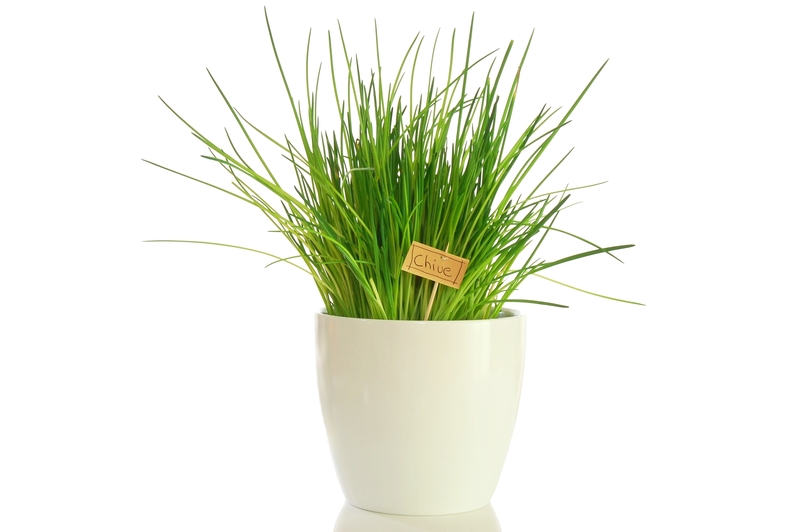Innovative Approaches to Combat Garden Wind
Posted on 21/06/2025
Innovative Approaches to Combat Garden Wind
Garden wind can be both a blessing and a curse. While a gentle breeze can offer much-needed ventilation and help pollinate plants, strong gusts can wreak havoc on your carefully cultivated landscape. From broken branches to dried-out soil, wind damage is a constant challenge for many gardeners. Fortunately, there are numerous innovative techniques to combat garden wind and protect your outdoor oasis. In this comprehensive guide, we'll explore modern strategies and creative solutions for minimizing wind damage and fostering a thriving garden environment.

Understanding the Impact of Garden Wind
Wind affects gardens in myriad ways, influencing plant growth, soil health, and the overall microclimate. Its effects can be both direct, like snapping stems and desiccating foliage, and indirect, such as spreading pathogens or carrying away valuable topsoil. To develop effective solutions to garden wind, it's crucial to first understand how wind impacts your garden and the unique challenges you face.
The Problems Caused by High Winds in Gardens
- Physical Damage: Broken branches, uprooted plants, and damaged flowers.
- Soil Erosion: Wind strips away the top layer of soil, removing nutrients and making it harder for plants to establish roots.
- Desiccation: Accelerated evaporation dries out the soil and plant tissues.
- Poor Pollination: Excessive wind can interfere with the work of pollinating insects.
- Spread of Disease: Fungal spores and pests can be carried to new plants.
With these challenges in mind, let's delve into the most innovative approaches to combating wind in your garden.
Creative Garden Wind Barriers
Traditional windbreaks like fences, walls, and hedges have been used for centuries. However, modern gardeners are now integrating innovative windbreak designs with multi-functional and sustainable materials.
1. Living Windbreaks
A living windbreak consists of fast-growing, dense plants such as shrubs and trees. These natural shields not only break up the wind but also provide habitat for beneficial wildlife and add beauty to your garden.
- Bamboo: Grows rapidly and creates a dense screen.
- Willows: Flexible branches withstand heavy winds.
- Nitrogen-fixing shrubs: Such as Elaeagnus or Sea Buckthorn, improve the soil while protecting your plants.
2. Permeable Fencing Solutions
Solid walls might seem effective, but they often create wind tunnels or turbulence. Instead, use permeable fences such as slatted wood, woven willow panels, or even recycled plastic fencing. These structures slow down the wind rather than blocking it, reducing pressure and minimizing damage.
3. Vertical Green Walls
Install vertical gardens or green screens with climbing plants. These not only serve as a stylish garden wind reduction technique but also utilize vertical space and promote biodiversity. Consider plants like ivy, honeysuckle, or clematis for a beautiful and functional green wall.
4. Modular Windbreak Systems
Modular wind barriers use interlocking panels made from sustainable materials, allowing for customizable heights and layouts to fit unique garden spaces. Some systems incorporate solar panels, rainwater catchment, or edible plant panels, providing multi-use wind solutions.
Innovative Planting Techniques to Combat Wind
Optimizing how and where you plant is an effective way to counteract wind's effects. The following modern garden wind protection strategies use clever layout and species selection to create resilient gardens.
1. Staggered Planting Arrangements
Rather than planting in straight lines, try staggered or triangular arrangements. This configuration keeps wind from sweeping through and gives every plant the benefit of shelter from its neighbors.
2. Companion Planting for Wind Protection
Mix taller, sturdy species with shorter, more delicate plants. Giants like sunflowers or corn can shield lettuce, herbs, and other low-growing crops, acting as natural windbreaks within your beds.
3. Raised and Sunken Beds
- Sunken beds: By lowering your planting area, you create a natural wind barrier that offers more protection and less exposure to drying gusts.
- Raised beds: With solid sides, these can deflect wind, especially if oriented perpendicular to prevailing winds.
4. Using Ground Covers
Plant ground covers like creeping thyme or clover to lock in soil moisture and prevent erosion. These soil-saving techniques minimize the drying effect of garden wind and keep your beds healthy.
Modern Materials and Technology Against Garden Wind
From synthetic fabrics to advanced anchor systems, today's gardeners have an arsenal of technological solutions to withstand garden wind.
1. Wind-Resistant Plant Supports
- Flexible staking systems: These bend with the wind, absorbing force and helping plants develop stronger stems.
- Floating row covers: Lightweight fabric that protects against wind, pests, and frost, while allowing air and water to pass through.
- Adjustable trellises: Modular and repositionable, these can be angled to deflect prevailing winds.
2. Geotextiles and Mulches
High-quality mulches and geotextile fabrics keep soil in place despite strong gusts. These materials also conserve moisture and suppress weeds, making them a triple-threat solution.
3. Smart Irrigation Systems
Wind increases evaporation, demanding more frequent watering. Smart irrigation systems, including drip emitters and automated sensors, supply moisture efficiently right to the roots, conserving water and protecting against wind desiccation.
4. Temporary Wind Protection Structures
When storms or seasonal winds threaten, deploy pop-up solutions such as portable mesh screens, hoop houses, or collapsible tunnels. These innovative structures can be erected and removed as needed, offering flexible garden wind protection without compromising aesthetics.
Sustainable and Eco-Friendly Wind Protection Methods
Eco-conscious gardeners can implement several sustainable ways to combat wind in the garden using natural and recycled materials.
- Willow hurdles: Made from woven willow branches, these are biodegradable, attractive, and highly functional.
- Recycled pallet fences: Transform old pallets into permeable windbreaks, reducing waste and cost.
- Green hedging: Plant native shrubs to support biodiversity, capture carbon, and serve as permanent wind barriers.
These solutions not only safeguard your plants but also promote a healthy, resilient ecosystem.
Planning and Design Tips for Wind-Resilient Gardens
Your overall garden design plays a crucial role in its ability to withstand wind. Here are some practical garden design tips to reduce wind problems:
- Analyze wind patterns: Use a wind compass or weather apps to determine prevalent wind directions. Place the strongest barriers facing these directions.
- Layer barriers: Combine living windbreaks with fences and ground covers for multi-tiered defense.
- Encourage plant diversity: Varied root structures and foliage densities trap wind more effectively.
- Incorporate water features: Ponds and streams humidify the air, counteracting dryness from wind.
Case Studies: Successful Innovative Wind Solutions
Urban Rooftop Garden Wind Management
A New York rooftop garden used modular planter systems with built-in wind screens and drip irrigation. Arranging planters in a staggered formation, and interspersing tough grasses with delicate crops, reduced wind damage by over 50%. This approach demonstrates how modern windproof gardening can be tailored for small urban spaces.
Community Garden with Permeable Fencing
A community garden in Chicago suffered from soil erosion and plant loss due to strong lake breezes. Volunteers installed permeable fencing using recycled plastic and native shrub borders. The result? Improved crop yields and healthier, more robust plants throughout the season.

Frequently Asked Questions About Garden Wind Solutions
Can wind ever be beneficial for garden plants?
Absolutely. Gentle breezes strengthen plant stems, aid pollination, and help reduce fungal disease. The key is finding a balance between protection and airflow.
What are the best plants for wind-prone gardens?
Choose tough, flexible species like bamboo, juniper, or willow for windbreaks. For exposed sites, opt for low, spreading varieties such as lavender, rosemary, or creeping thyme.
How do I protect young seedlings from wind?
Use floating row covers, cloches, or temporary windbreaks of mesh or netting until plants are large enough to withstand gusts.
Is it possible to reduce wind without blocking sunlight?
Yes. Permeable barriers, slatted fencing, and thoughtfully placed living screens provide wind protection while allowing light to filter through.
Conclusion: Creating a Wind-Resistant Garden for the Future
Combating garden wind requires a blend of tradition, technology, creativity, and eco-conscious choices. By integrating innovative wind protection approaches--from living windbreaks and permeable fencing to smart irrigation and sustainable materials--you'll foster a robust, beautiful, and sustainable outdoor space. Remember to adapt solutions to your unique environment and don't be afraid to experiment with new methods. With the right planning, your garden can thrive even in the face of the strongest gusts.
Ready to transform your landscape? Start implementing these innovative strategies and you'll not only defeat the challenges of garden wind, but also create a healthier, more enjoyable space for years to come!
- Explore living windbreaks: Plant resilient shrubs and trees tailored for your climate zone.
- Try permeable barriers: Experiment with designs that combine wind protection and beauty.
- Incorporate smart materials: Use geotextiles, modular fencing, and tech-driven watering systems.
- Prioritize sustainability: Choose eco-friendly, recycled, or biodegradable protection methods wherever possible.
With these comprehensive, innovative approaches to managing wind in your garden, you can enjoy lush growth and year-round outdoor enjoyment, regardless of what the weather brings.

